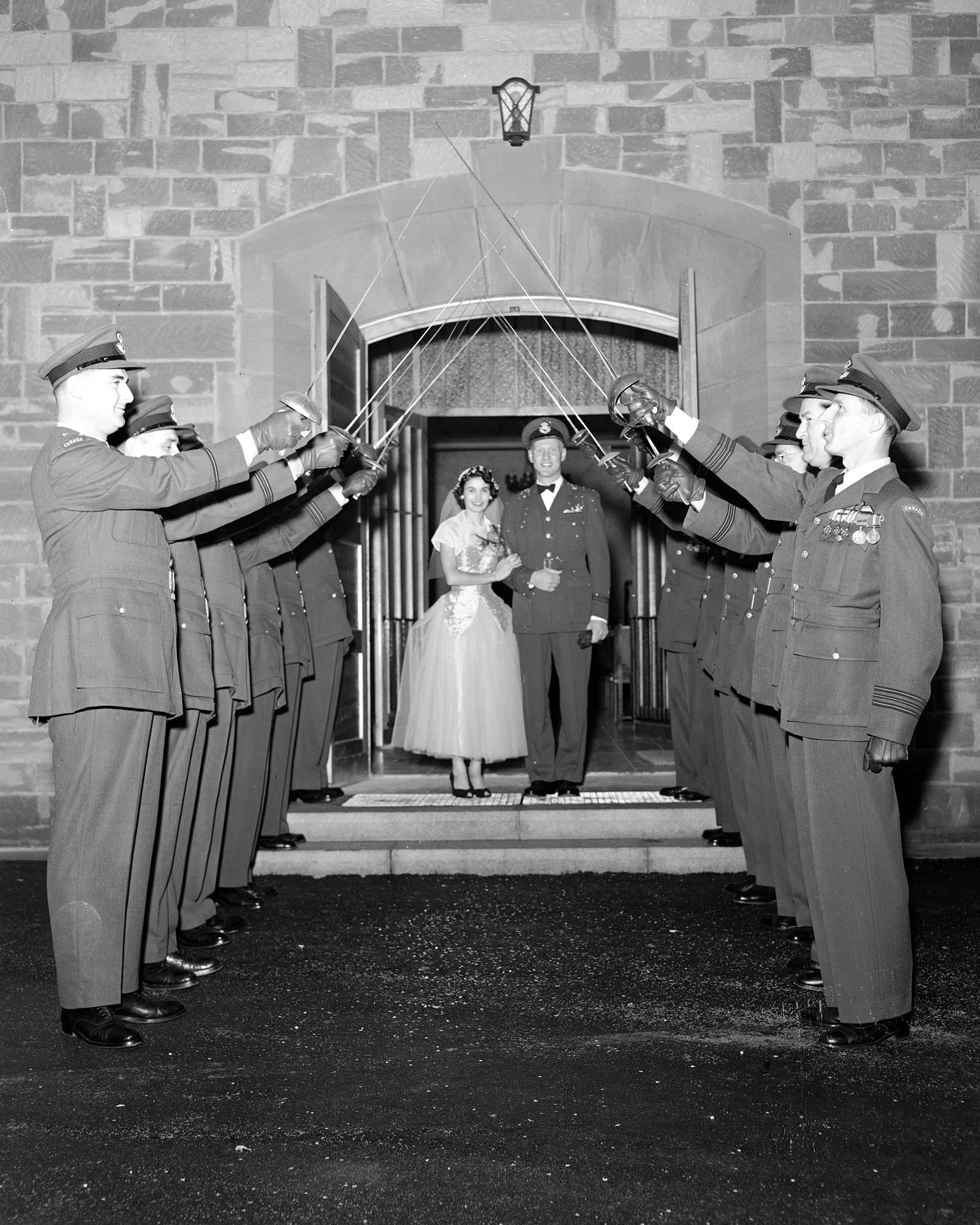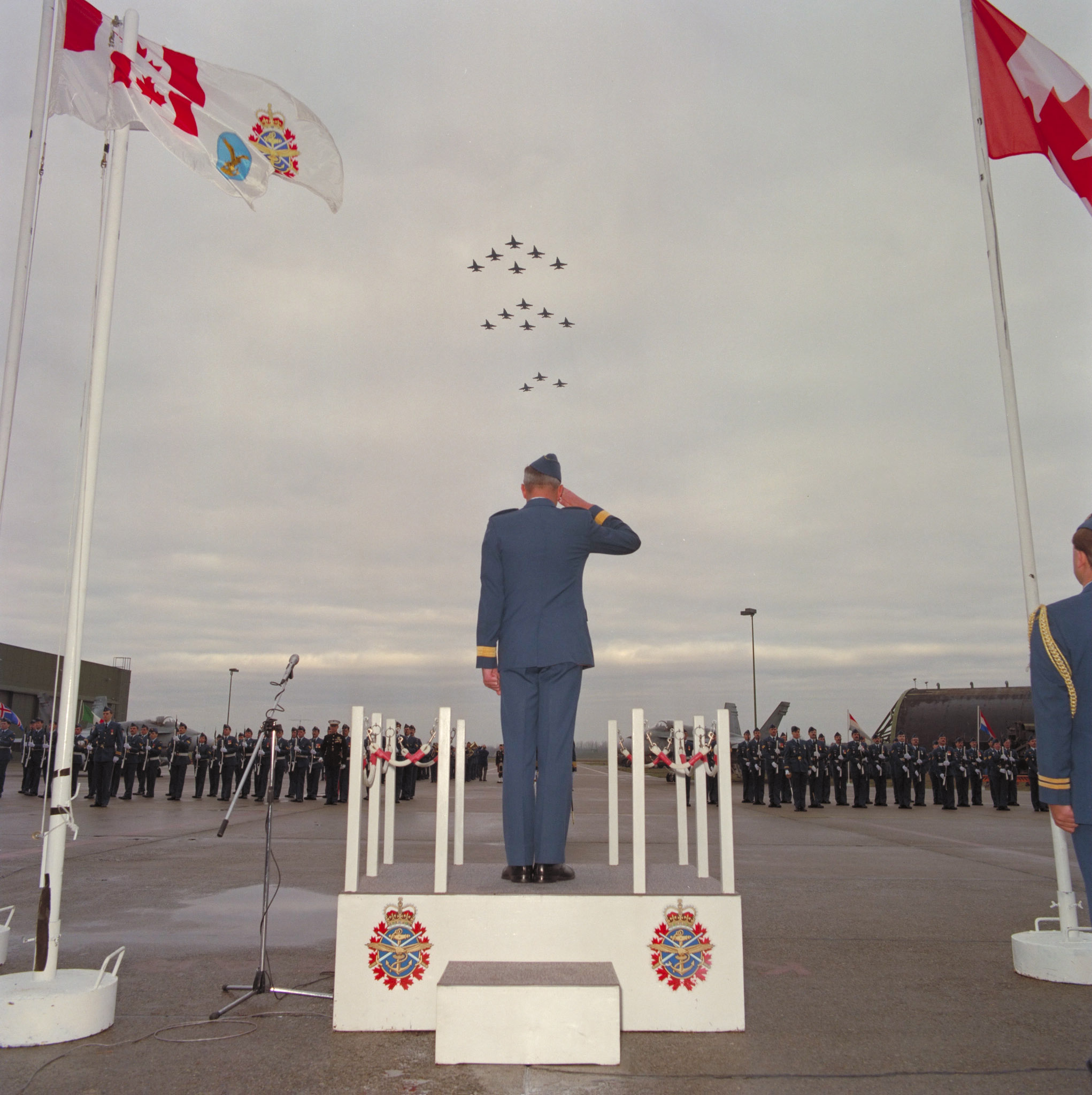A 1963 snapshot of 1 Air Division Europe
News Article / April 23, 2018
Royal Canadian Air Force
In April 1953, the headquarters of 1 Air Division moved from Paris to Metz, France. According to historians Hugh Halliday and Brereton Greenhous, “An advanced echelon of 1 Air Division was established in Paris in August 1952 . . . . No. 1 Air Division Headquarters itself formed in Paris in October as part of the 4th Allied Tactical Air Force. The location was temporary; in April 1953 it was moved to Metz.” [1]
To mark 1 Air Division’s move to Metz 65 years ago, we bring you this brief history of the Division and an outline of its components as published in “Welcome to 1 Air Division Europe”, dated November 1, 1963. The booklet’s purpose was to assist military personnel and their families in “getting settled in and adjusted to [their] new environment in Europe”.
The thesis of NATO is based on defensive strength and, towards this end, Canada has contributed 12 fighter squadrons in the form of the 1st Canadian Air Division.
The RCAF’s first peacetime overseas base was opened at North Luffenham, England, when No. 1 Fighter Squadron brought over its own Canadian-built F-86 Sabres aboard Her Majesty’s Canadian Ship Magnificent in November 1951. Several months later, 441 Squadron arrived at North Luffenham. In June 1952, the third squadron arrived overseas by the history-making Operation “Leap Frog One”, in which the squadron flew its sabres from Bagotville, Quebec, by way of Goose Bay in Labrador, Greenland, and Iceland.
The first continental base to open was 2 (Fighter) Wing at Grostenquin, France, in October 1952. Following the pattern of Leap Frog One, the Wing, involving three squadrons, safely flew its own planes across the Atlantic en masse.
The second RCAF continental base to open was Zweibrucken, Germany, in March 1953, where 3 (Fighter) Wing landed after a successful trans-Atlantic Flight. 4 (Fighter) Wing, of three Sabre Sabre Squadrons, arrived at Baden Soellingen, Germany, in September 1953 to complete the planned Canadian 12-squadron contribution to NATO.
The final move was made early in 1955 when 1 (Fighter) Wing moved from North Luffenham to Marville in France.
61 AC&W [Aircraft Control and Warning] Squadron was activated at Metz in 1955 to become the only radar unit in the RCAF located outside Canada.
In November 1956 the first squadron of Canadian-designed and built CF-100 [Canuck] “all-weather fighters” joined the Air Division. These were supplied by Canada at the explicit request of SHAPE (Supreme Headquarters Allied Powers in Europe) to help fill a shortage of all-weather and night fighter aircraft. Today, four such squadrons of CF-100s have been fused with the eight remaining Sabre squadrons to give the RCAF an around-the-clock fighter defence and bomber escort role.
A large organization with six individual units must, of necessity, have a headquarters. Until 1953, this headquarters was in Paris. However, it soon became apparent that Paris was not easily accessible to the various units on the Continent. The Château de Mercy in the Metz area filled this particular requirement more satisfactorily and 1 Air Division Headquarters is now located there.
1 Air Division Headquarters is situated about three miles southeast of Metz, France. Metz, with a population of about 100,000 inhabitants, is one of the major cities in the Department of Moselle. It is situated on the principal road and rail lines enroute from Holland, Belgium and Luxembourg to Switzerland and Italy. There are many interesting historical sights in this 2,000-year-old city, as well as a good shopping district and restaurants to suit every pocket-book. 61 AC&W Squadron is also located in Metz.
1 (Fighter) Wing is situated in France about 60 miles northwest of Metz, near the town of Marville. Marville is within an hour’s drive of both Verdun, a city of 13,000 inhabitants, and Luxembourg, a city of some 35,000, which is the capital of the Grand Duchy of Luxembourg. The base itself was constructed in 1954 and the Wing, formerly situated in England, was re-located in early 1955.
This unit is located approximately 35 miles southeast of Metz in the Department of Moselle. The surrounding countryside is primarily agricultural; however, there are coal mines scattered throughout the area. The closest town is Faulquemont, with a population of 4,000, situated seven miles from the unit. It is the railhead for 2 (F) Wing. St. Avold, the largest of the surrounding towns and the location of the PMQs [private married quarters] for 2 (F) Wing, is approximately 11 miles from the station.
3 (Fighter) Wing is located near the town of Zweibrucken on the western-most border of Germany. Zweibrucken, largely destroyed during the last war, has been rebuilt into a semi-modern city of 30,000 inhabitants. It is located in the Rhineland-Palatinate, an area of rolling hills and forests, while on the plateau, about three miles southeast of the city, our modern air base overlooks the countryside.
Situated on the edge of the Black Forest in Germany near the Rhine River, we find 4 (Fighter) Wing, which is about half an hour’s drive from the city of Baden-Baden. This city is the foremost health and pleasure resort in central Europe. Baden-Baden, the Black Forest and the local communities offer many diversions for personnel during off-duty hours.
Strasbourg, one of Europe’s major rail centres, is located approximately 40 miles southwest of the station, just across the border in France.
The Air Weapons Unit is located at the airfield of Decimomannu, Sardinia, approximately 12 mile north of Cagliari. The two main cities on the Italian island of Sardinia are Cagliari (the capital) at the southern end of the island, with 140,000 inhabitants, and Sassari, at the northern end, with a population of 70,000.
Adapted from a web article from Harold A. Skaarup (in English only)
The RCAF left France in 1967 and, after the RCAF was reorganized and consolidated with Canada's other two services, 1 Air Division was replaced by 1 Canadian Air Group (1 CAG), with its headquarters at Canadian Forces Base Lahr, West Germany.
As an austerity measure in 1968, No. 3 (Fighter) Wing Zweibrücken was closed and its two squadrons were moved to No. 1 (Fighter) Wing and No. 4 (Fighter) Wing.
Then, in1969, the Canadian Forces in Europe were amalgamated into one command with two bases. This resulted in the Canadian Army in northern Germany moving south to No. 1 (Fighter) Wing and No. 4 (Fighter) Wing. No. 1 (Fighter) Wing in Lahr was closed and the Canadian Air Force in Europe was reduced in strength from six to three squadrons.
The remaining three squadrons were concentrated at Canadian Forces Baden-Soellingen, under 1 CAG on June 29, 1970. 1 CAG continued until 1988, when Canada increased her commitment to NATO and No. 1 Canadian Air Division stood up again.
With the fall of the Berlin Wall in 1989 and the ensuring end of the Cold War, Canadian Forces elements stationed in Europe were withdrawn and CFB Lahr and CFB Baden-Soellingen were closed in 1993. No. 1 Canadian Air Division ceased flying operations on January 1, 1993.
[1] Canada’s Air Forces 1914-1999, Editions Art Global and Department of National Defence, 1999.
Page details
- Date modified:










